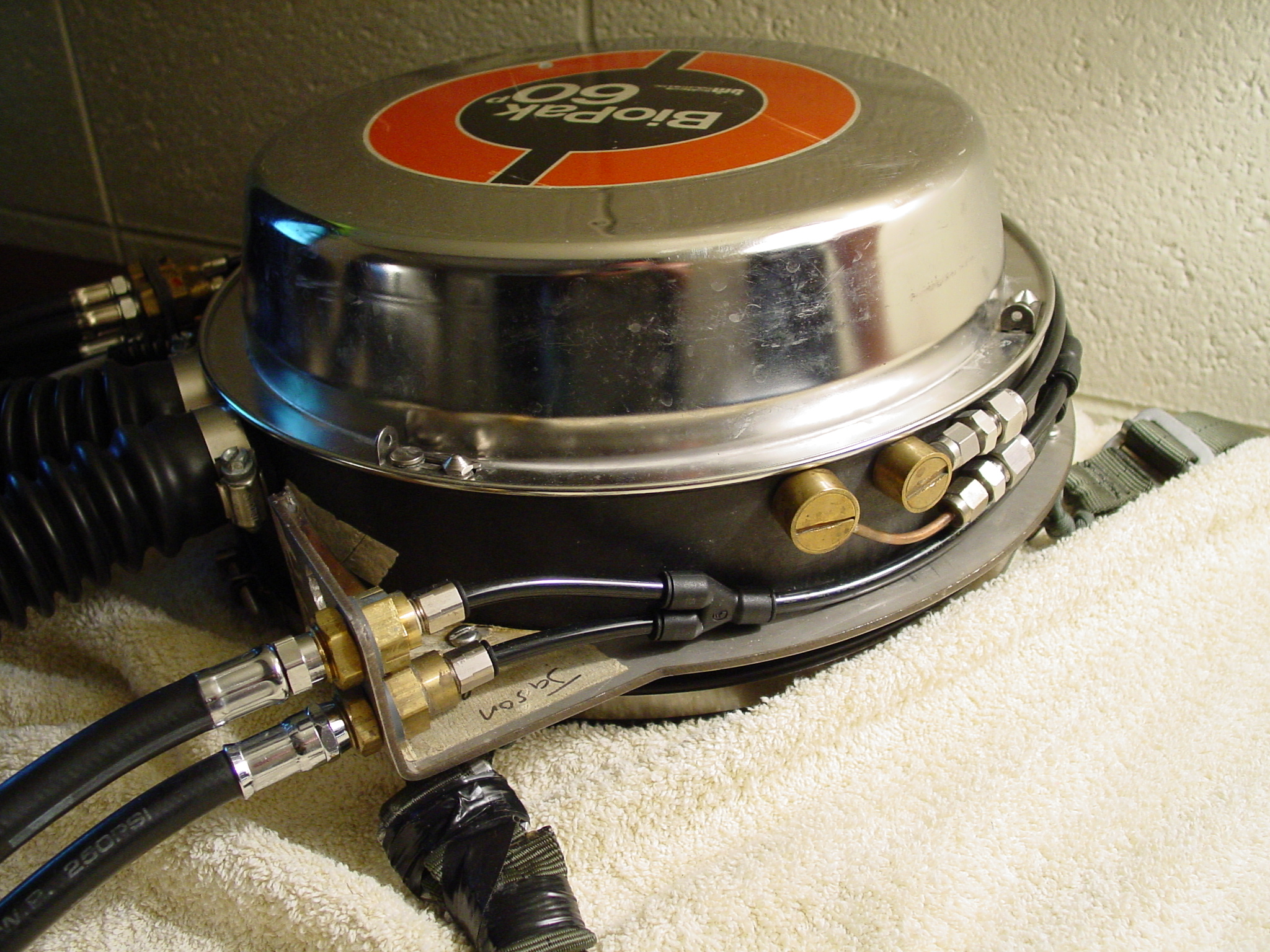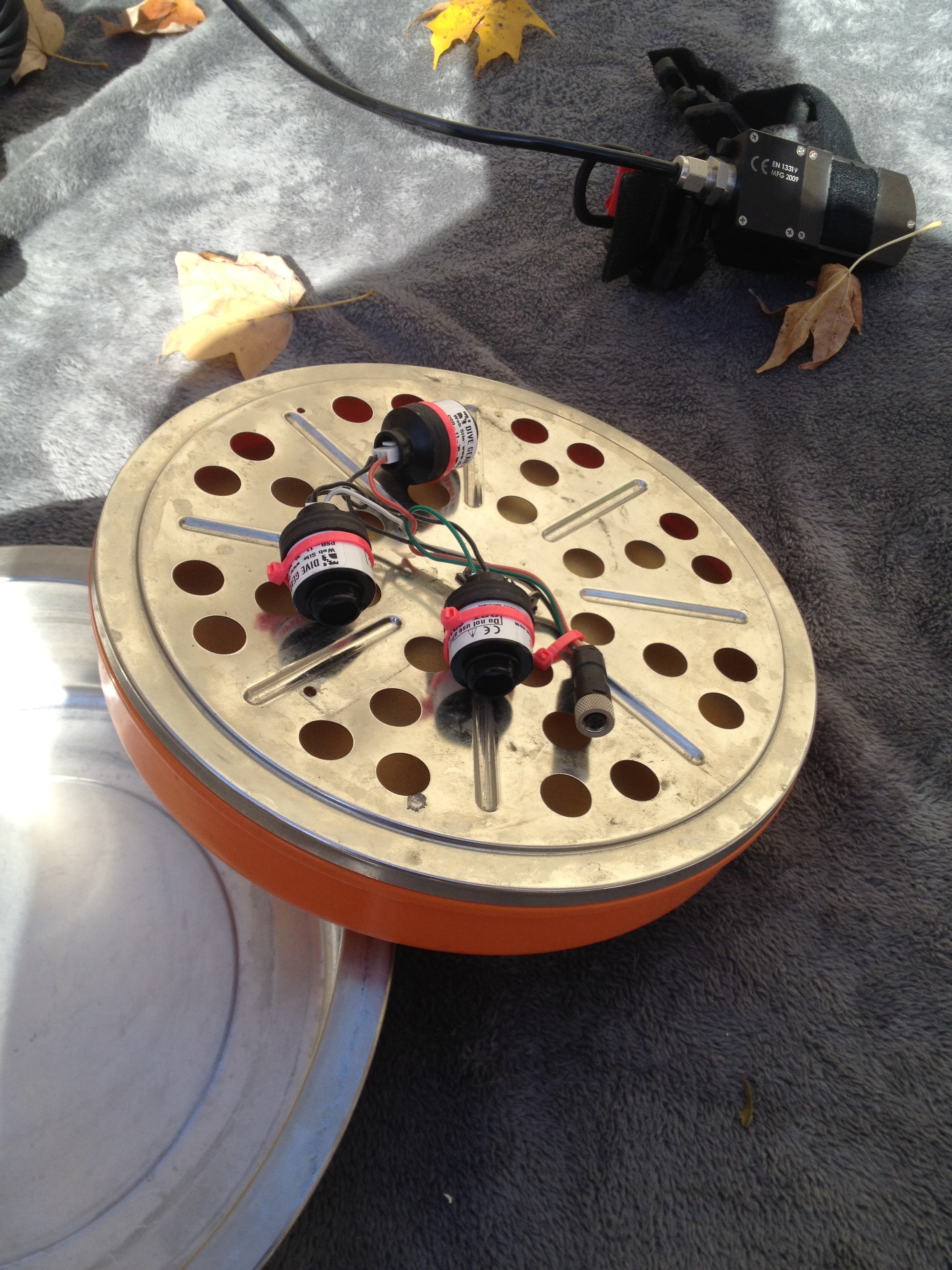My BP-60 success story!
Well, after a few (ahem) years of working on my pet BP-60 project, I met with success today- 45 minute bottom time (in cave) at 90 feet- 2.6 cf of diluent consumed! Yea!
I've been working on this project for some time as a gas extender for my sidemount rig- It has had a few dives prior to this, but all O2 only, as the Munro board had not been installed. Got that finished last month.
Home manufactured bulkhead fittings for scuba to push-to-connect fittings, and handmade banjo fittings to replace the originals.
There are a lot of proof-of-concept items on the rig, not the least of which are Legris push to connect fittings and plastic 250PSI tubing used throughout. (Which, I am happy to report, doesn't leak at all, and is SUPER easy to work with.)
A good view of the plastic orifice and filters, inline on the tubing. Ultimately, the did not stay in place when the tubing got hot, and the pressure popped them apart. Had to switch to stainless filters with compression fittings.
The basic BP60 counterlung case, diapharagm, scrubber, cover, and ADV are really the only parts I have kept, everything else was binned. The counterlung and steel cover will soon be replaced with a deeper version, in hopes of increasing the run time and reducing the possibility of early breakthrough. (Haven't seen it yet.)
The counterlung case is mounted on a homemade stainless steel frame which provides bulkheads for mounting all the hose connections. This is also connected to a lower steel frame that provides the connection for the harness straps (really only straps that attach to my sidemount harness) and retains the counterlung return spring.) These two parts add just enough weight to make the rig neutral with the counterlung partially filled, and completely eliminate the plastic housing that added breathing resistance.
The retaining plate that replaced the original plastic plate.
Both Oxygen and Diluent are offboard, using Swakelok DESO quick connects. Oxygen addition is via a miniature plastic orifice, which just happens to have barb fittings that fit into the plastic tubing used in all the Legris fittings. Inline barbed filter on either side. (Had an earlier orifice get clogged between dives before I added the filters- the jury is still out on the filters.) The orifice and filters are so cheap I have a box of them in case it turns into a problem.
Manual Oxygen and Diluent addition are also included via a dual inflator handset, Oxygen on one side, Diluent on the other. This works fantastically, though in the future, the buttons will become different shapes, as in a pinch, it might be easy to add the wrong gas, as they feel the same even though they are on opposite sides of the handset.
handmade two button diluent and oxygen addition. 10 years later, and it is still smaller than anything else on the market.
I now have one of Jacob's BOV (golem gear) which I am sorry to say actually breathes better in OC mode than most of my regulators. :D I have to agree with all that this is a fantastic piece of kit, and even the slightest hint of overbreathing the scrubber and I am off on OC, with a quick twist.
The sensors are a bank of K1Ds (only thing I could fit) run to a Munro V1 board, which works very well, but is a little ungainly and large, and I will eventually build a much smaller one, perhaps with one of his new boards! :)
The "Munro" board.
And for the dive report- Mounted the BP60 on the back of my sidemount rig (SM120s). This still leaves my chest area clear, which I like, as this is the deployment area for my OC regulators (attached to a neck loop.) The loop hoses are a little short, which means there is just enough room for the BOV to sit away from my mouth while standing, and is a little snug around the neck, but when in the water, it seems to work fine, and I can turn my head, without the hoses floating, despite having no hose weights. The LP hose feeding the BOV is a little long, so that flaps somewhat.
First dives on the unit- at JB, in the lower cavern. Hands up, heads up display.
The addition handset sits over my right shoulder d-ring (mirrors my wing inflator on the other side) and is very easy to reach, and actually, you can see it with the loop in your mouth.
Once in the water, with the O2 bottle turned on and plugged in, the O2 level slowly climbs, as it should, so I prebreathed the rig for a couple of minutes to bring the loop O2 down, introduce fresh diluent and heat up the scrubber.
Once that is all under control, my safety diver and I decend into the cavern (which is crystal clear blue today) and we start a slow swim into the cave, with me eyeballing the display every second or so. (OK, I'm actually holding it in one hand, my light in the other.) As we decend in depth the ADV adds gas before it gets difficult to breath, and the PO2 increases as it should. Once at depth (90 feet) the O2 remains very stable, which means I have the O2 set right, at 0.5 LPM. We swim at varying rates so I can get a feel for how the machine will work, how easy it is to overbreath, etc.
Exiting the cave, before there was grass.
A comparison- Two weeks ago I dove a friend's KISS Classic. Though I really like that machine (I will eventually have to buy one) the BP-60 breathes a little better than the Kiss, and the ADV is certainly easier to operate, though I understand that is intentional on the part of the Kiss. I felt like I had to suck my lungs out to activate the ADV on the kiss- the BP60 added just as I needed it. I dislike the diluent manual add on the Kiss- though in truth, I'm not really sure when you would have to manually add diluent when you could just exhale from the mask, but having the diluent add easily accessible was nice. (Never had to use it, so hmmm.) O2 manual addition is very similar in feel, though I like having it on a short and controlled hose, rather than flying around like the Kiss one. Only used that to boost O2 for deco. Overall, the BP60 is lighter, and a bit tail heavy, due to my use of a rear-mounted AL14 for O2, the Kiss was perfectly balanced when bolted to the back of my sidemount rig. I liked the pendant display on the Kiss, will soon have one similar on the BP60.
The R22D sensors and Liquivision X1 with datalink. If not for the batteries, probably one of the best computers I have ever owned.
Some notes.
The scrubber can definately be overbreathed. I intentionally tried to overwork it, swimming really fast against the flow, and after about 20 seconds switched to OC for a couple of breaths and purged the loop. This took care of the problem, but for an extended heavy swim, I might be in trouble. However, even If I had to switch back and forth, I would save more gas than if I was just OC.
The feed hose for the BOV is too long- it swings wide of the rest of the hoses.
Another 2 inches of loop hose length wouldn't hurt.
Anyway, hope someone got something out of this- no pictures of yet, I dont know anyone here with a camera and spare time, but I will try to add a couple of captures of the CAD drawings which show the frame parts and the handset.
jason







